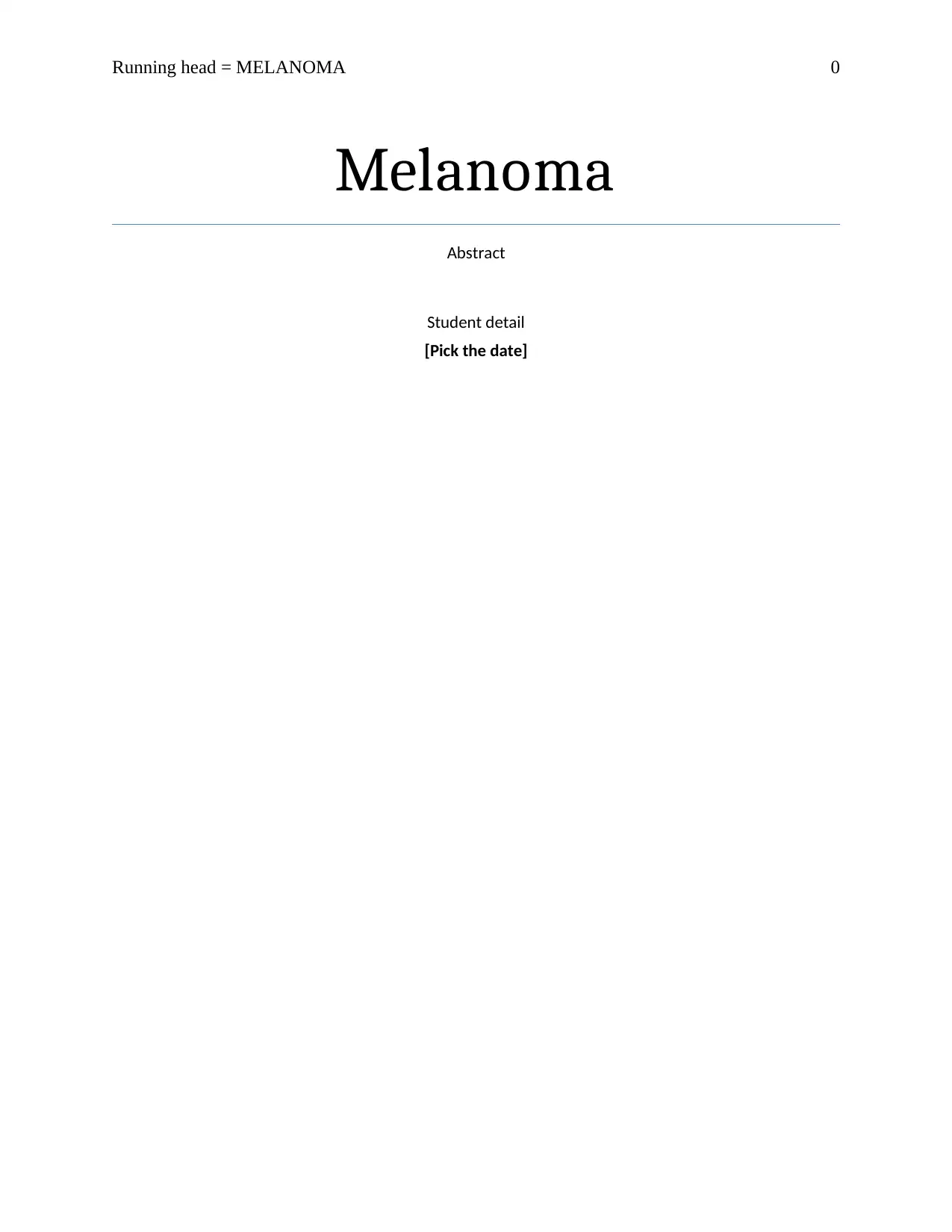Melanoma: Pathophysiology and Pharmacology in NSC2500 Course
VerifiedAdded on 2022/08/26
|3
|300
|15
Report
AI Summary
This report examines melanoma, focusing on its pathophysiology and pharmacological treatments. Melanoma, a skin disorder linked to melanocyte dysfunction, is often triggered by UV radiation. The report details the role of the immune system, particularly through immunotherapy, and the use of drugs like Nivolumab to target cancer cells. It explores the genetic pathways involved, such as BRAF and NRAS, and the mechanism of action of Nivolumab as a PD-1 inhibitor. The report also addresses the side effects associated with Nivolumab and highlights the need for further research to improve treatment outcomes. The report covers the epidemiology of melanoma, which is the 5th most common malignancy in men and 7th in women.
1 out of 3










![[object Object]](/_next/static/media/star-bottom.7253800d.svg)